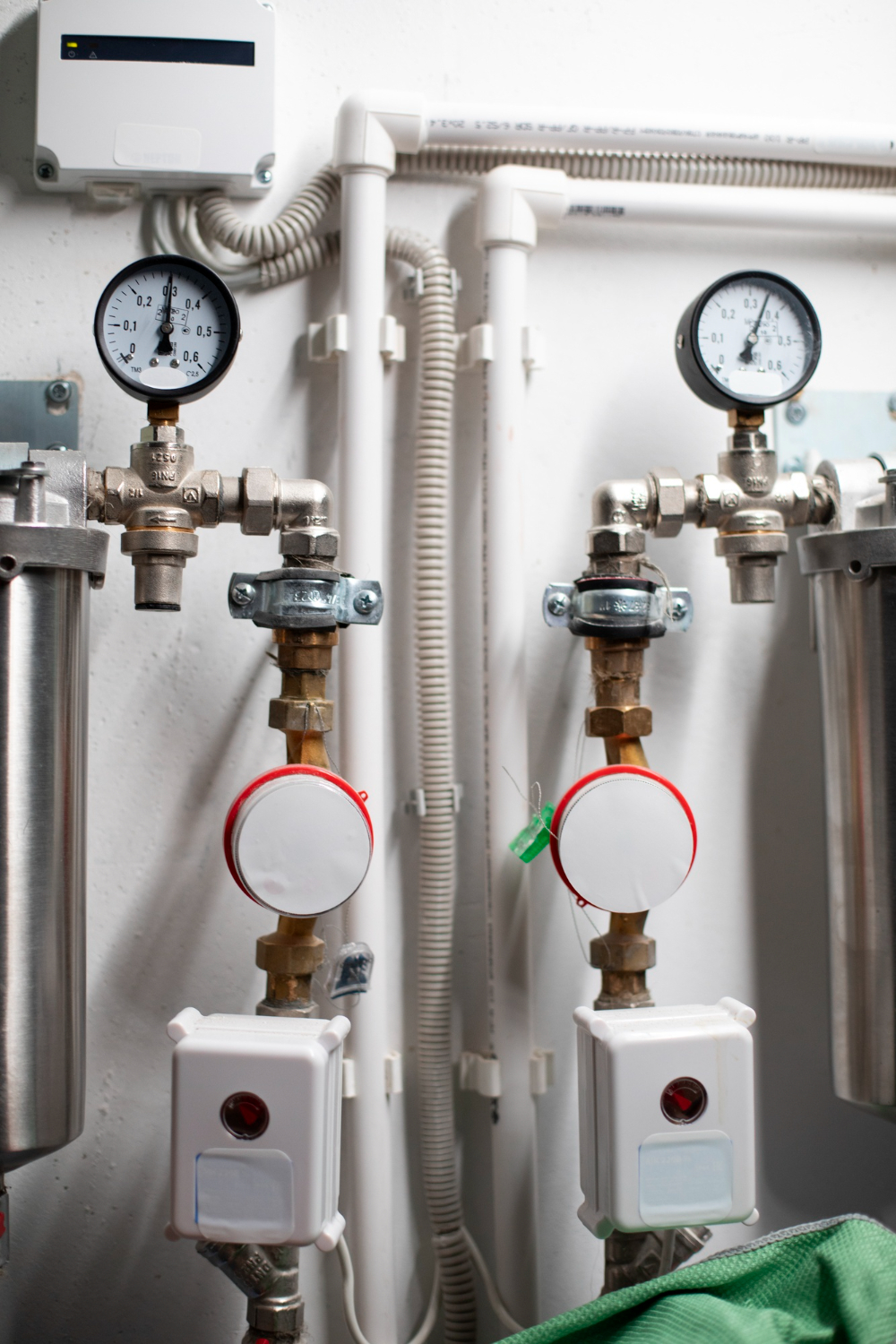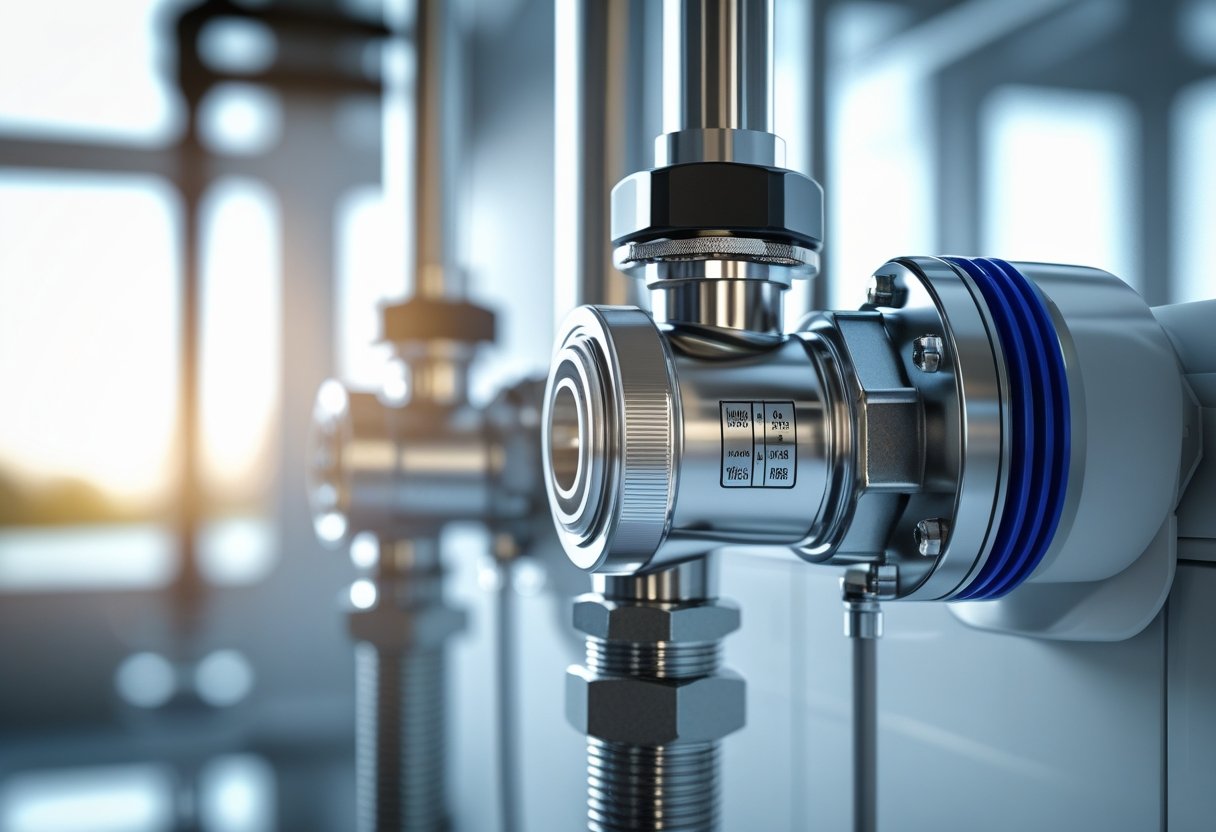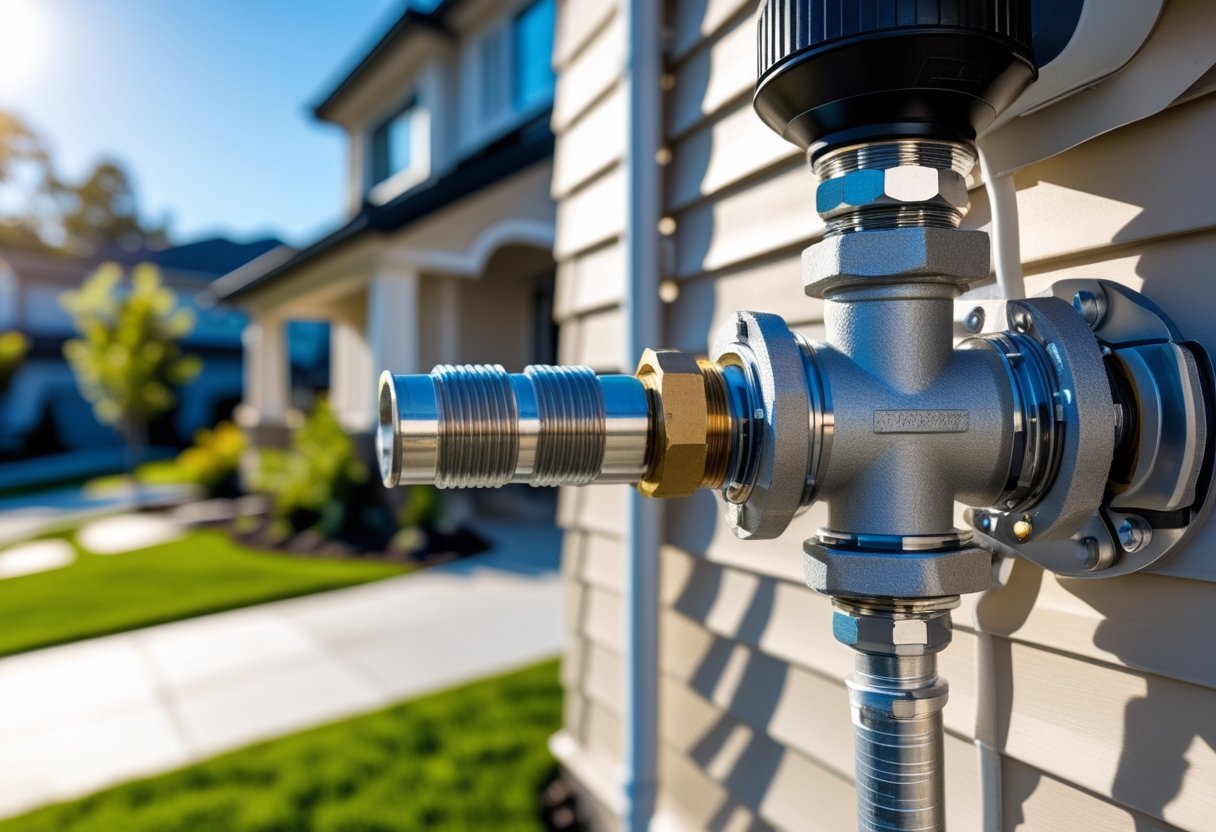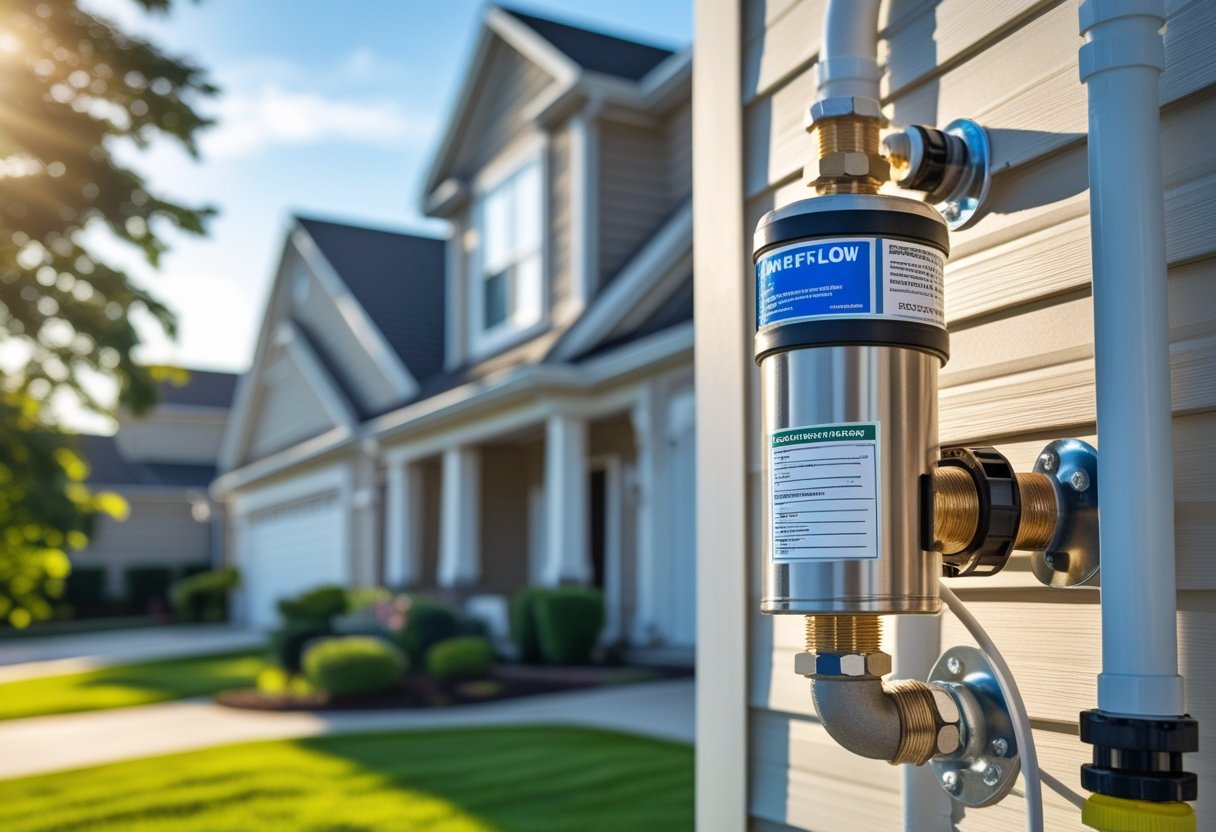Your backflow preventer quietly protects your drinking water every day, but most people don't know what's actually inside these devices or how they work. When these small but critical parts fail, contaminated water can flow backward into your clean water supply, putting your family's health at risk.
Understanding the key components of your backflow preventer helps you spot problems early and avoid costly emergency repairs. Each part has a specific job in keeping dirty water from mixing with your clean water. From the tiny check valves to the relief valves, these components work together as your first line of defense against water contamination.
We'll walk you through the essential parts that keep your water safe, show you the warning signs of failure, and explain the differences between home and business systems. You'll also learn when to replace parts before they break and how proper maintenance can save you hundreds of dollars in repairs.
Here’s what you need to know:
- What's really inside a backflow preventer
- Three small parts that can fail without warning
- What changes between residential and commercial devices
- When backflow parts should be replaced and why waiting is a mistake
- How Pacific Backflow handles inspections and repairs
By the end, you’ll know how backflow device parts work, what fails first, and when to replace components to stay compliant.
What's really inside a backflow preventer
A backflow preventer contains several key parts that work together to stop contaminated water from flowing backward into clean water supplies.
The main components include check valves that only open one way, relief valves that release excess pressure, springs that help valves close quickly, and seals that prevent leaks between parts.
According to the U.S. EPA’s Cross-Connection Control Manual, a Double Check Valve Assembly consists of two independently operating spring-loaded check valves, tightly closing shut-off valves on each side, and properly located test cocks for field testing.
How each part works to block water from reversing
Check valves are the main defenders against backflow. These valves have a disc or gate that opens when water flows forward and snaps shut when pressure drops or reverses. The spring inside pushes the valve closed with force.
When water tries to flow backward, the check valve disc gets pushed against its seat. This creates a tight seal that blocks reverse flow completely.
Relief valves work differently. They open when pressure gets too high between the two check valves. This releases water to the outside instead of letting it build up pressure that could force the check valves open.
According to the U.S. EPA, a reduced pressure principle backflow preventer maintains its intermediate zone at least 2 psi below supply pressure; if supply pressure drops, the relief valve opens to atmosphere to safely discharge.
The shut-off valves let us turn water on and off for testing or repairs. These valves don't prevent backflow directly. They just control when water can enter or leave the device.
Valves, seals, springs: what they do and where they sit
The check valves sit in the main water path. Each one has a disc, spring, and rubber seat. The spring sits behind the disc and pushes it toward the seat when water pressure drops.
Valve seats are where the disc makes contact to stop flow. These seats have rubber or soft material that creates a watertight seal. Without good seats, water can leak past closed valves.
Springs come in different strengths. Stronger springs close valves faster but need more water pressure to open. We find springs made of stainless steel or bronze in most devices.
Seals and gaskets sit between parts that screw together. These rubber pieces stop water from leaking out of joints and connections. O-rings are common seal types that fit in grooves around valve stems and test ports.
The relief valve sits between the two main check valves. It has its own spring and disc that opens when pressure builds up in this middle chamber.
What makes Watts devices more resistant to wear
Watts backflow preventers use bronze or stainless steel for valve bodies instead of plastic. Metal bodies resist cracking from pressure changes and temperature swings better than plastic ones.
The valve discs in Watts units often have rubber faces bonded to metal cores. This design lasts longer than all-rubber discs that can tear or warp over time.
Watts uses stainless steel springs in many models. These springs resist rust and keep their strength longer than regular steel springs. Strong springs mean valves close quickly and completely.
The seats in Watts devices often have replaceable inserts. When seats wear out, we can replace just the insert instead of the whole valve body. This saves money and extends the life of the device.
Test cocks and shut-off valves get bronze or stainless steel stems. These materials resist corrosion from chemicals in water that can cause cheaper metals to fail.
Three small parts that can fail without warning
Backflow devices rely on three critical small parts that can stop working suddenly. Check valves can stick shut, relief valves can fail under pressure changes, and shut-off valves often get missed during routine checks.
Check valves and the risks when they stick or jam
Check valves are the primary defense against water flowing backward in your system. These small disc-shaped parts must open and close smoothly to work correctly.
Debris is the biggest enemy of check valves. Small pieces of dirt, sand, or mineral deposits can get stuck around the valve seat. When this happens, the valve cannot close completely.
A stuck check valve allows contaminated water to flow back into clean water lines. This creates serious health risks for everyone using the water system.
Common signs of check valve problems include:
- Water pressure drops suddenly
- Discolored water from taps
- Strange tastes or smells in drinking water
- Failed backflow test results
We see check valve failures happen most often in areas with hard water. The mineral buildup slowly prevents the valve from sealing properly. By the time you notice problems, contamination may have already occurred.
Regular testing catches these issues before they become dangerous. However, check valves can jam between scheduled tests without any warning signs.
Relief valves and how pressure changes affect them
Relief valves protect backflow devices from damage caused by high water pressure. These small spring-loaded parts open automatically when pressure gets too high inside the device.
Pressure fluctuations stress relief valves over time. Each time water pressure spikes, the valve must open and close. This constant movement wears out the internal spring and sealing surfaces.
Temperature changes also affect how relief valves work. Hot weather can cause water pressure to rise throughout the day. Cold weather can make valve parts contract and fail to seal properly.
Relief valve failure symptoms:
- Water dripping from the device
- Pressure readings that stay too high
- Backflow device making unusual noises
- Test gauge showing inconsistent results
When relief valves fail, they usually get stuck in the open position. This allows water to leak out continuously and reduces system pressure. The backflow device cannot protect your water supply effectively.
We recommend checking relief valves during every maintenance visit. Many failures happen gradually and are hard to spot without proper testing equipment.
Shut-off valves that get overlooked during maintenance
Shut-off valves allow technicians to isolate backflow devices for testing and repairs. These valves seem simple but play a crucial role in system safety.
Most shut-off valve problems develop slowly. The valve handles become harder to turn as internal parts wear out. Sealing surfaces develop small leaks that get worse over time.
Many maintenance crews focus on testing the main backflow device parts. They often skip checking shut-off valve operation until problems become obvious.
Hidden shut-off valve issues include:
- Valves that won't close completely
- Internal seals that allow water to bypass
- Corroded stems that break during operation
- Handles that spin without moving the valve
When shut-off valves fail during an emergency, we cannot isolate the backflow device quickly. This delays repairs and extends the time that water contamination could occur.
Proper shut-off valve maintenance requires:
- Operating each valve fully during inspections
- Checking for leaks around valve stems
- Testing valve seating with pressure gauges
- Lubricating moving parts as needed
We find that shut-off valves last longer when operated regularly rather than left in one position for months.
What changes between residential and commercial devices
Residential and commercial backflow devices differ significantly in material construction, part durability, and regulatory requirements. These differences directly impact installation costs, maintenance needs, and legal compliance for property owners.
Why material strength matters more in larger systems
Commercial backflow devices handle much higher water pressure than residential units. The parts must withstand constant stress from heavy water flow throughout the day.
Brass vs. bronze construction:
- Residential devices often use standard brass components
- Commercial systems require heavy-duty bronze or stainless steel parts
- Bronze components resist corrosion better under high-pressure conditions
The valve seats in commercial devices are thicker and more durable. They need to maintain tight seals even after thousands of cycles. Residential valve seats can be lighter since they face less daily use.
Pressure rating differences:
- Residential: 150-175 PSI typical rating
- Commercial: 200-300 PSI or higher rating
Spring mechanisms in commercial units are also stronger. They must return valves to proper position even under high back-pressure situations. Weak springs lead to device failure and potential contamination.
When commercial-grade parts are worth the cost
Commercial-grade parts cost 2-3 times more than residential components. However, they prevent costly violations and system failures that can shut down businesses.
Replacement frequency:
- Residential parts: Replace every 3-5 years
- Commercial parts: Replace every 5-8 years
- Commercial parts reduce long-term maintenance costs
We see property owners save money by using commercial-grade check valves in high-use residential applications. Buildings with irrigation systems or multiple units benefit from stronger components.
Critical applications:
- Medical facilities require commercial-grade reliability
- Restaurants face health department shutdowns with device failures
- Manufacturing plants cannot afford contamination risks
The relief valve assemblies in commercial devices include metal-to-metal seating. This prevents leakage that would trigger false alarms in monitoring systems.
How the wrong setup can lead to code violations
Using residential device parts in commercial applications violates most local plumbing codes. Inspectors can red-tag installations immediately upon discovery.
Common violation scenarios:
- Installing 3/4" residential device on 1" commercial line
- Using plastic parts where metal components are required
- Inadequate test ports for annual inspections
We've seen businesses forced to replace entire systems during routine inspections. The violation notices require immediate correction before reopening.
Code requirements by property type:
- Residential: Basic atmospheric vacuum breaker often acceptable
- Commercial: Reduced pressure zone (RPZ) assemblies typically mandatory
- Industrial: Double check valve assemblies minimum standard
The testing ports on commercial devices must meet specific thread and valve requirements. Residential test ports often lack the durability needed for annual professional testing procedures.
When backflow parts should be replaced and why waiting is a mistake
Backflow parts wear out over time and lose their ability to protect your water supply. Regular inspection helps catch problems early, while skipping maintenance can lead to expensive repairs and health risks.
Early signs that your device isn't sealing correctly
Water pressure drops are often the first sign of sealing problems. When internal parts like check valves start to fail, they can't maintain proper pressure in your system.
Look for visible leaks around valve assemblies and test cocks. Even small drips mean the seals are breaking down and need attention.
Dirty or discolored water coming from your taps suggests contaminated water is flowing backward into your clean supply. This happens when seals fail completely.
During testing, watch for these warning signs:
- Relief valve discharge that won't stop
- Test cocks that leak when opened
- Pressure readings that drop quickly
- Valves that feel loose or wobbly
Temperature changes can also damage rubber seals and gaskets. Hot weather makes them crack while cold weather makes them brittle.
What happens when you skip routine maintenance
Skipping maintenance turns small problems into big ones. A $20 seal replacement becomes a $500 device replacement when you wait too long.
Internal components wear faster without regular cleaning and lubrication. Debris builds up and causes parts to stick or break completely.
Contamination risks increase when damaged parts can't prevent backflow. Your drinking water could mix with chemicals, bacteria, or other harmful substances.
You might fail required testing if parts are too worn. This means emergency repairs and possible fines from your water utility.
Replacement costs multiply when one bad part damages others. A failing check valve can ruin pressure regulators and other expensive components.
Most importantly, your insurance may not cover damage from poorly maintained equipment.
How often you should check and replace internal parts
Annual testing reveals most problems before they become serious. Certified testers check all internal parts during these inspections.
Check valves typically last 3-5 years with normal use. Replace them when they show signs of wear or fail pressure tests.
Rubber seals and gaskets need replacement every 2-3 years. They break down faster in areas with hard water or extreme temperatures.
Here's a basic replacement schedule:
Part Type
Check Every
Replace Every
Check valves
1 year
3-5 years
Seals/gaskets
1 year
2-3 years
Springs
1 year
5-7 years
Test cocks
6 months
As needed
High-use devices in commercial buildings may need more frequent part replacement. Heavy water flow wears components faster.
Water quality matters too. Chlorinated water and mineral deposits damage internal parts more quickly than clean water.
Replace parts immediately if they fail testing. Waiting until the next scheduled maintenance puts your water supply at risk.
How Pacific Backflow handles inspections and repairs
We follow strict testing protocols to ensure your backflow device meets all safety standards. Our team uses only original manufacturer parts and provides fast turnaround times for repairs and compliance documentation.
What we check during each device test
We connect specialized test gauges to measure pressure at key points throughout your backflow system. This lets us see if water can flow backward into your clean supply.
Our inspection covers several critical areas:
- Relief valve operation - We test if it opens and closes at the right pressure
- Check valve sealing - We verify both valves stop reverse water flow completely
- Differential pressure - We measure the pressure difference across valve assemblies
- Physical condition - We look for cracks, corrosion, or worn components
We also check the area around your device. Debris can damage parts and make future repairs harder.
During testing, we listen for unusual noises that might signal internal problems. Leaks around fittings or valve bodies tell us seals may need replacement.
Each test follows manufacturer specifications. We document all pressure readings and note any issues we find.
Why we use original Watts replacement parts
We only install genuine Watts replacement parts in your backflow device. These parts meet exact factory specifications and maintain your device's certification.
Generic parts often fail sooner than original components. They may not seal properly or handle the required pressure ranges.
Key benefits of original Watts parts:
- Maintain manufacturer warranty coverage
- Meet local code requirements
- Provide reliable long-term performance
- Ensure proper fit and function
Using original parts keeps your device compliant with local regulations. Many areas require certified components to pass inspection.
We stock common Watts replacement parts to speed up repairs. This includes check valve internals, relief valve assemblies, and sealing components.
Our turnaround time for part replacement and compliance filing
We complete most backflow repairs within 24-48 hours of diagnosis. Simple part replacements like valve internals or seals often finish the same day.
More complex repairs may take 2-3 business days. We keep you informed about timing throughout the process.
Our typical timeline:
- Same day: Seal replacement, minor adjustments
- 1-2 days: Check valve internals, relief valve assembly
- 2-3 days: Complete device replacement or major repairs
After completing repairs, we file all compliance paperwork with local authorities within 48 hours. You receive copies of test results and certification documents.
We handle the entire compliance process. This includes submitting forms to water departments and updating your testing records.
Emergency repairs get priority scheduling. We understand failed backflow devices can shut down business operations or violate health codes.
Conclusion
Understanding backflow device parts helps us protect our water supply. Each component has a specific job that keeps contaminated water from flowing backward into clean water systems.
Check valves stop water from moving the wrong way. Relief valves release pressure when needed. Test cocks let us check if the system works properly.
When we know what these parts do, we can spot problems early. This saves money on repairs and keeps our water safe to drink.
Regular maintenance becomes easier when we understand each part's function. We can tell repair technicians exactly what seems wrong instead of guessing.
Pressure vacuum breakers work best for home sprinkler systems. Double check valve assemblies handle higher-risk situations like commercial buildings.
We should inspect our backflow devices at least once per year. Look for leaks, corrosion, or damaged parts. Listen for unusual sounds that might signal problems.
Most areas require professional testing annually. However, knowing the basic parts helps us maintain our systems between professional visits.
Water contamination poses serious health risks. By understanding our backflow prevention devices, we take an active role in protecting our families and communities.
Schedule a backflow device inspection and parts replacement with Pacific Backflow today, request an itemized quote with OEM components, certified testing, and AHJ paperwork included.











